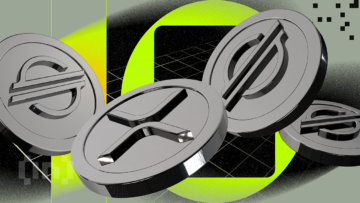There are multiple ways to earn an appreciable passive income in the crypto market. One of the most carefully considered questions is that of yield farming vs. staking. Yield farming and crypto staking are the two main ways that cryptocurrency investors use to earn additional income. Unlike crypto trading, collecting DeFi yield is far more secure, and users often make a decent profit. We cover both these methods and how you can get started.
- What is DeFi and how to earn a passive income?
- What is staking: Proof-of-work vs. Proof-of-stake
- How does staking work?
- How to stake PoS cryptocurrencies
- Top 5 cryptocurrencies for staking
- Best yield darms
- Bake (ex. Cake DeFi)
- Pancake Swap
- Yearn Finance
- Curve Finance
- What is yield farming?
- How does yield farming work?
- What are the risks of yield farming?
- Yield farming vs. staking
- Yield farming vs. staking: Which one is better?
- Frequently asked questions
What is DeFi and how to earn a passive income?

DeFi stands for Decentralized Finance. It refers to all the Dapps built on top of blockchain networks, such as Ethereum. It allows users to buy, sell, lend, and borrow cryptocurrency like the traditional banking system.
Cryptocurrency investors can easily make passive income through DeFi lending platforms and liquidity pools. Since the DeFi space boomed in 2020, many lending platforms have been launched, allowing users to be Yield Farmers. Since then, many crypto enthusiasts have been talking about yield farming vs. staking — and which one is better.
Multiple avenues exist for collecting DeFi yields. Crypto holders must decide on the best possible way to use their funds and earn the best rewards.
What is staking: Proof-of-work vs. Proof-of-stake
Proof-of-work (PoW) and proof-of-stake (PoS) are two consensus mechanisms that validate transactions on a blockchain platform.
Bitcoin is the first blockchain ever created, and it uses PoW. This consensus, often called mining, uses hardware to provide node validation and generate new blocks on the blockchain. Since computers need to perform these complicated calculations, they tend to cost more, and the electricity bill can reach high figures. Therefore, mining is not a sustainable system, and not everyone can be a miner on the network.
Proof-of-stake, however, is an alternative to the PoW. Instead of mining, validators stake their crypto to generate new blocks. The process of staking is far less energy-consuming. Many new platforms prefer staking, and it is a much more eco-friendly mechanism for blockchains.
Ethereum is the most popular network for DeFi. It has already started upgrading its network to a PoS mechanism to offer sufficient transaction throughput. Ethereum 2.0 will be ready in 2022, but investors can already start staking ethereum.
How does staking work?
PoS blockchains use staking to validate new transactions on the blockchain.
Users are required to stake either a fixed amount to become validators, or they can participate in liquidity pools. Each staking platform may have slightly different rules; the most common way is using staking pools.
Staking typically involves locking your crypto funds, akin to a crypto savings account, and necessitates an investment in cryptocurrency. This process not only helps secure the network but also enables you to earn passive income.
Each liquidity pool, including those involving stablecoins, comes with its own conditions and APYs (Annual Percentage Yields), which represent the annual income potential for that specific pool. It’s important to note the conditions of a liquidity pool before staking, as they may vary in terms of fixed timeframes or offer different APYs compared to others.
To generate the highest possible passive income from staking, study all the different ways of staking your particular crypto.
How to stake PoS cryptocurrencies

Staking is easy, and it can be done with any relevant cryptocurrency. Only cryptocurrencies native to a Proof-of-Stake mechanism can be used for staking. Bitcoin, for instance, belongs to a PoW blockchain and cannot be staked.
The most common ways to stake crypto are:
- Using a wallet
- Using a crypto exchange
- Participating in a staking pool
- Becoming a validator
Each cryptocurrency may have slightly different methods for staking, and that’s why it is important to research each cryptocurrency and its staking process.
The most common steps for staking cryptocurrency are:
/Related
More Articles- Set up a crypto wallet for staking.
- Transfer your crypto funds to that wallet.
- Decide on one staking pool. Crypto exchange might not offer too many options.
- Lock your funds for staking.
- Wait to collect your staking rewards (aka your passive income).
Cold wallet staking is also available. This offers maximum protection for your staked funds, as there is no internet connection.
Ethereum 2.0 already allows staking. You can become a validator if you have 32 ETH and the technical knowledge to set up a validator node. Or you can use a crypto exchange, such as Binance, to stake ethereum.
Cardano is already well-known for its wallets used for staking ADA. Some might believe that you can mine cardano, which is not true.
Cardano only requires a wallet connected to the network, and staking begins immediately. You’ll choose the staking pool. Users who don’t want to use a crypto wallet for staking can use a crypto exchange instead, and you can start right after you buy cardano. Another asset that can be staked using a crypto wallet is theta.
Other top staking cryptocurrencies are polkadot and CAKE on the PancakeSwap exchange.
Top 5 cryptocurrencies for staking

Crypto staking has already locked up hundreds of millions of dollars, and the DeFi space continues to rise. Staking platforms allow regular crypto investors to increase their earning and earn a passive income.
A lucrative blockchain network requires an active team of developers and real use cases for the platform. The more investors are interested in it, the more the network will grow and gain interest from new investors and developers.
These are the most staked cryptocurrencies:
- Ethereum
- Cardano
- Tezos
- Polygon
- Theta
Best yield darms
As with any system, yield farmers support the system because they earn an incentive from the platform they use. The best yield-farms are usually the ones that are most secure and provide the highest yields.
Each blockchain has a bunch of yield farms, and they all offer different conditions. Some investors opt to buy the funds required to become a yield farmer. Others focus on finding the best yield farm for the assets they already own.
Considering the latest trends and interest in the crypto space, here are a few of the top-yield farms:
Bake (ex. Cake DeFi)
CakeDeFi is a platform that covers all your DeFi needs. It’s designed to be user-friendly and help you earn more. The available products include Staking, Borrowing, Yield Mining, and YieldVault.
With YieldVault, investors can make high returns on their crypto assets by using the DeFiChain vaults, which take advantage of current negative interest rates. Staking, Borrowing, and Yield Mining work just as their names suggest.
Pancake Swap
PancakeSwap is a DEX that is based on the BNB Chain. It works similarly to other automated market maker (AMM) platforms in that it allows users to trade cryptocurrencies directly from their digital wallets, eliminating the need for intermediaries.
PancakeSwap employs a liquidity pool model, in which users contribute their tokens to various liquidity pools, which are then used to facilitate trading. Fees are charged to liquidity providers on trades made in their pools in proportion to their share of the total pool.
Yearn Finance
The next dApp, Yearn Finance is a DeFi protocol that aims to optimize yield generation for crypto assets. It provides an automated platform that helps users find the highest yield opportunities across various lending and liquidity protocols.
Yearn Finance is known for its yield farming strategies, which dynamically allocate funds to maximize returns. It has gained popularity for its community-driven approach and the ability to generate passive income through its yield optimization services.
Curve Finance
Another yield farming app, Curve Finance, is a DEX protocol designed specifically for stablecoin trading. It focuses on providing low-slippage and low-fee transactions for stablecoin swaps, making it ideal for stablecoin traders and liquidity providers. Curve Finance utilizes advanced automated market-making algorithms to maintain stablecoin pegs and optimize trading efficiency.
The protocol has gained popularity for its ability to minimize impermanent loss and its integration with other DeFi platforms, allowing users to participate in yield farming and earn additional rewards.
What is yield farming?

Yield farming is a newer concept than crypto staking, and it refers to the ability of one investor to carefully plan and choose what tokens to lend and on which platform. Cryptocurrency holders have the option to lend their funds, using liquidity pools, and receive a reward for their effort.
Yield farming, also known as token farming, has been around since 2020 when Compound — the first DeFi lending protocol — was launched. Today, we have multiple DeFi lending platforms used for yield farming, each with its own benefits.
Crypto holders can use a lending platform, such as Compound or Aave, or they can provide liquidity directly on DEXs, such as Uniswap or PancakeSwap.
The process of token farming is pretty basic, as users need to deposit their funds on one of these lending platforms and receive an APY and the platform’s token, which in turn can be used for yield farming again.
If you prefer to use a DEX, you will need to provide a pair of coins, according to the available liquidity pools. Each liquidity provider will receive a percentage of the rewards of the pool, according to the amount provided.
The passive income for yield farmers comes from the interest rate paid by the borrower or the users of the liquidity pool, in the case of the DEXs. Yield farming is deemed more reliable than crypto trading, and the most risk-free earnings are generated by stablecoins.
How does yield farming work?
In the traditional banking system, financial operations such as lending and borrowing are handled by banks, which act as intermediaries. While banks use “order books,” yield farming uses smart contracts or automated market makers (AMM) to facilitate crypto trading.
Liquidity providers (LPs) deposit funds to the liquidity pool to sustain the system, and they earn a reward for it.
Because of the liquidity providers who offer their funds to certain liquidity pools, other users can lend, borrow, and trade crypto. All crypto transactions have a service fee, which is distributed among the LPs.
Besides that, all lending protocols have a native token distributed to the LPs to incentivize liquidity pool funding further.
When comparing yield farming with staking, it is important to remember that yield farming is still a new method, and experience is the only thing that will teach you how to reap the maximum rewards from yield farming.
Liquidity providers (LPs) and liquidity pools
The order book is kept by the AMM system, and the liquidity pools and the liquidity providers (LPs) are the two main components.
So, what is a liquidity pool? Basically, it is a smart contract that collects funds to facilitate crypto users to lend, borrow, buy, and sell cryptocurrency. Those who deposit funds into liquidity pools are called liquidity providers (LPs) and use their funds to power the DeFi ecosystem. They earn incentives from the liquidity pool.
Oftentimes, low trading volume tokens are the ones benefiting the most from yield farming, as this is the only way to easily trade them.
What are the risks of yield farming?
When comparing yield farming with staking, it is worth noting that there are different ways these two processes work.
There are risks associated with yield farming that every crypto investor should be aware of.
Collateral can be liquidated
When a user wants to borrow crypto, it is required to deposit collateral, which will cover the loan. This is how DeFi loans work. Some lending protocols require as much as 200% of the value borrowed to be deposited as collateral.
This means that a user needs to deposit an asset to borrow another one. If the deposit or collateral suddenly plummets in value, the pool will try to recuperate the loss by selling the collateral on the open market, but there still can occur a loss of value, which leaves the liquidity providers exposed to loss.
The borrower then loses the collateral. That’s why it is better to borrow from a high ratio collateral pool, to avoid collateral liquidation, in case the price of an asset drops.
Price fluctuations
The crypto market is known for its volatile nature. While this can yield great rewards for traders and some investors, yield farmers can experience loss when tokens suddenly lose value. This can happen when certain trends make the market buy or sell certain tokens.
Protocol’s glitches
Yield farming and the entire DeFi ecosystem rely on smart contracts to facilitate all financial operations provided by these Dapps. But smart contracts are pieces of programming code that are still written by humans. Humans can make errors. A poorly designed protocol or smart contract can lead to hacker attacks or other malfunctions, which leads to the loss of funds.
Yield farming vs. staking
Yield farming and staking have many similarities, and they are both excellent methods to generate a passive income as a crypto holder. The main difference is that yield farming requires users to deposit their crypto funds on DeFi platforms. Staking is when crypto investors use their funds to support the blockchain and help validate transactions and blocks on the network.
With that in mind, let’s dig in to summarize the main differences between yield farming and staking.
Comparison table
| Staking | Yield Farming | |
| Profit | Staking has a set reward, which is expressed as an APY. It is usually around 5%, but can be higher, depending on the staking token and method. | Yield farming requires a well-thought investing strategy. It is not as straightforward as staking, but it can yield much greater rewards or up to 100%. |
| Rewards | Staking rewards are the network incentive given to validators that help the blockchain reach consensus and generate new blocks. | The rewards for yield farming are determined by the liquidity pool and can fluctuate as the token’s price changes. |
| Security | Staking tokens have a strict policy, and it is directly tied to the blockchain’s consensus. If bad actors try to trick the system, they risk losing their funds. | Yield farming relies on DeFi protocols and smart contracts, which might be vulnerable to hackers if the programming has been done in a poor manner. |
| Impermanent Loss Risk | There is no impermanent loss if you stake crypto. | Yield farmers are exposed to some risks that occur due to the volatile price of digital assets. Impermanent loss can occur when your funds are locked in a liquidity pool and the ratio of the tokens in the pool is uneven. |
| Time | Different blockchain networks require users to stake their funds for a fixed period of time. Some also have a minimum amount requirement. | Yield farming doesn’t require users to lock up their funds for a fixed period of time. |
Yield farming vs. staking: Which one is better?
Each method demands a different level of crypto expertise. Yield farming might seem more lucrative regarding potential returns, but it requires a deeper understanding of the crypto market. It often involves more complexity and demands consistent attention and research, making it challenging for new crypto investors.
On the other hand, staking offers a simpler, more hands-off approach. While the rewards might be lower than yield farming, it doesn’t require constant monitoring, and investors can lock in their funds for longer periods. The choice ultimately depends on the type of investor you are and your experience level in the DeFi space.
Frequently asked questions
Is farming on PancakeSwap worth it?
Is yield farming the same as staking?
Is staking profitable?
Is yield farming still profitable?
Is yield farming riskier than staking?
What is the best way to earn yield on crypto?
Is yield farming the same as liquidity staking?
How does liquidity mining differentiate from yield farming and staking?
Trusted
Disclaimer
In line with the Trust Project guidelines, the educational content on this website is offered in good faith and for general information purposes only. BeInCrypto prioritizes providing high-quality information, taking the time to research and create informative content for readers. While partners may reward the company with commissions for placements in articles, these commissions do not influence the unbiased, honest, and helpful content creation process. Any action taken by the reader based on this information is strictly at their own risk. Please note that our Terms and Conditions, Privacy Policy, and Disclaimers have been updated.










